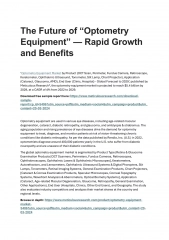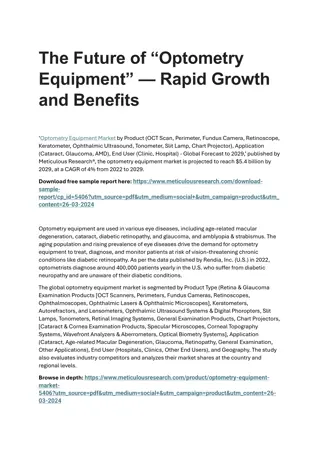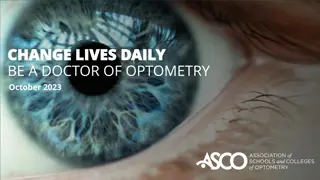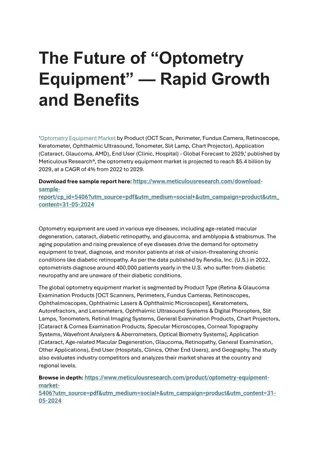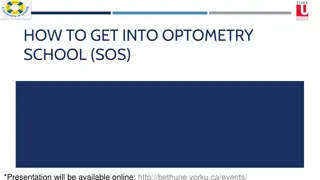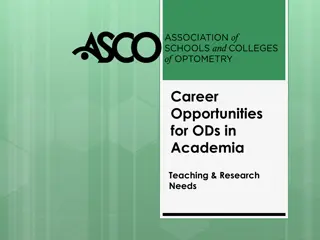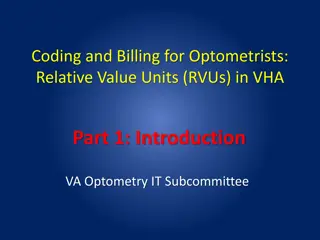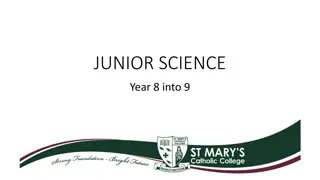Exploring Optometry in Biology: The Science of Vision Care
Optometrists play a crucial role in healthcare, focusing on eye health, sight testing, correction, and vision management. Understanding eye structure, common eye problems like myopia and hyperopia, and the use of lenses are key aspects of optometry. Take on the role of an optometrist to diagnose sight problems and recommend suitable lenses to correct vision issues. Optometry is a fascinating career path that bridges the gap between biology and patient care.
Download Presentation

Please find below an Image/Link to download the presentation.
The content on the website is provided AS IS for your information and personal use only. It may not be sold, licensed, or shared on other websites without obtaining consent from the author. Download presentation by click this link. If you encounter any issues during the download, it is possible that the publisher has removed the file from their server.
E N D
Presentation Transcript
Studying Biology Optometrists Optometrists are primary healthcare providers who offer a range of patient care encompassing sight testing and correction as well as diagnosis, treatment, and management of changes in a person s vision. Salaries start at 25,000 rising to up to 65,000 A detailed knowledge of the eye is required to practice optometry. The eye and correction of eye defects are studied in Unit 5 Homeostasis and response in Separate Biology https://youtu.be/nhdeagg1ELY
The structure of the Eye The eye contains light sensitive receptor cells in the retina of the eye, these detect light and send impulses to the brain The iris controls the size of the pupil regulating the amount of light entering the eye The cornea, suspensory ligaments and the lens are involved in focusing light on the retina
Eye Problems Myopia Short Sightedness Hyperopia Long Sightedness People with Myopia (short-sight) can focus clearly on objects that are close to them. However, they cannot focus clearly on distant objects. The image forms in front of their retina resulting in blurred vision. People with Hyperopia (long-sight) can focus clearly on objects that are in the distance. However, they cannot focus clearly on objects that are close to them. The image is focused behind their retina resulting in blurred vision.
Optometrists use lenses to help correct vision. A convex lens (converging lens) can focus the light that enters it and direct it to one point. A concave lens (diverging lens) makes the light rays move away from each other (spread out) Convex lenses and concave lenses refract light in different ways.
You are the Optometrist Patient 1 Explains that they are able to see objects in the distance clearly but are struggling to focus on small text in their morning paper 1. Using your knowledge of sight problems suggest what condition they may have Patient 2 Explains that they are able to see objects close by but are struggling to recognise friends approaching in the distance 1. Using your knowledge of sight problems suggest what condition they may have 2. Using your knowledge of lenses suggest what type of lens could be used in their glasses to correct this problem 2. Using your knowledge of lenses suggest what type of lens could be used in their glasses to correct this problem
Patient 1 - Diagnosis Patient 2 - Diagnosis How did you do?
Optometry is just one of many careers linked to Biology


